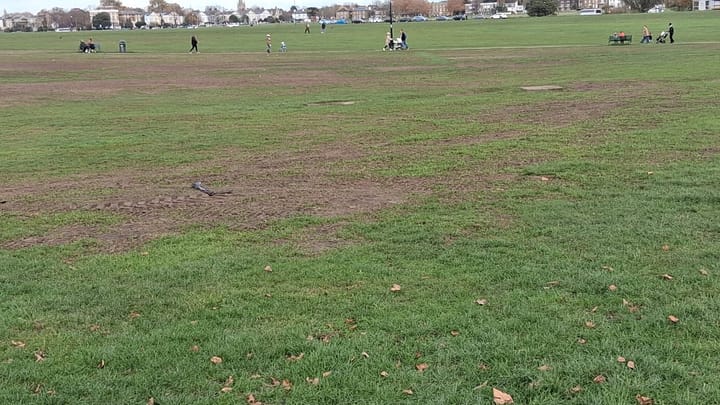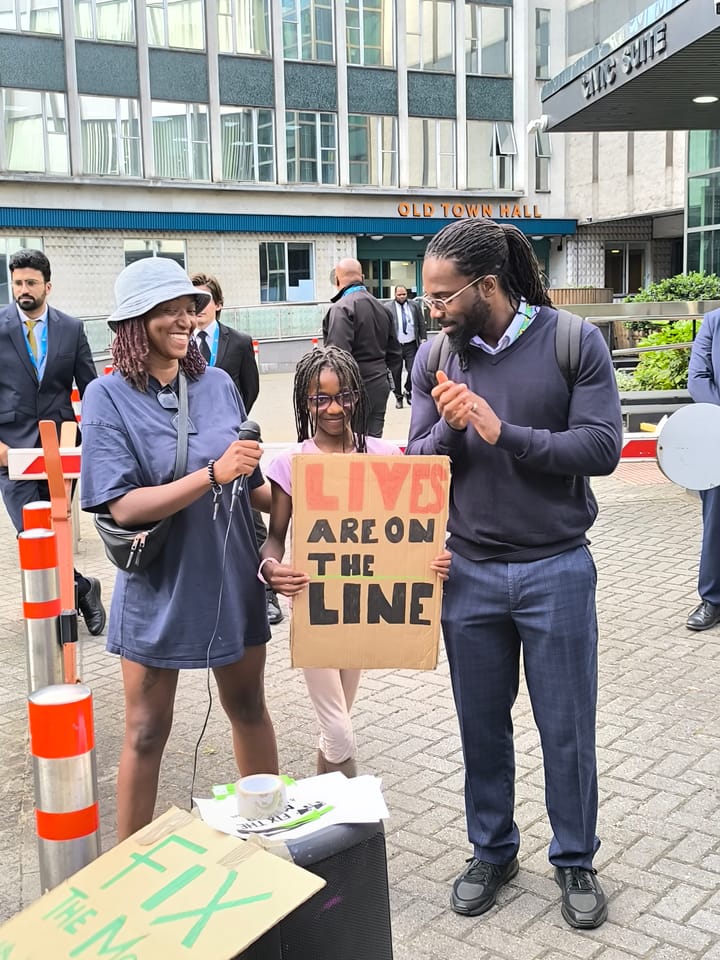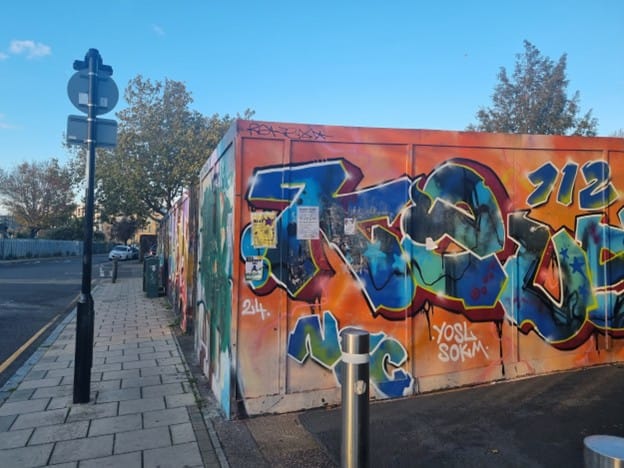Milford Towers, Catford: brutalist scheme loathed by its residents since 70s
Dubbed "Faulty Towers", residents began calling out the estate's design flaws soon after it opened. Mark Morris responds to our interview with architectural historian Jon Wright, who argued for the building's preservation.
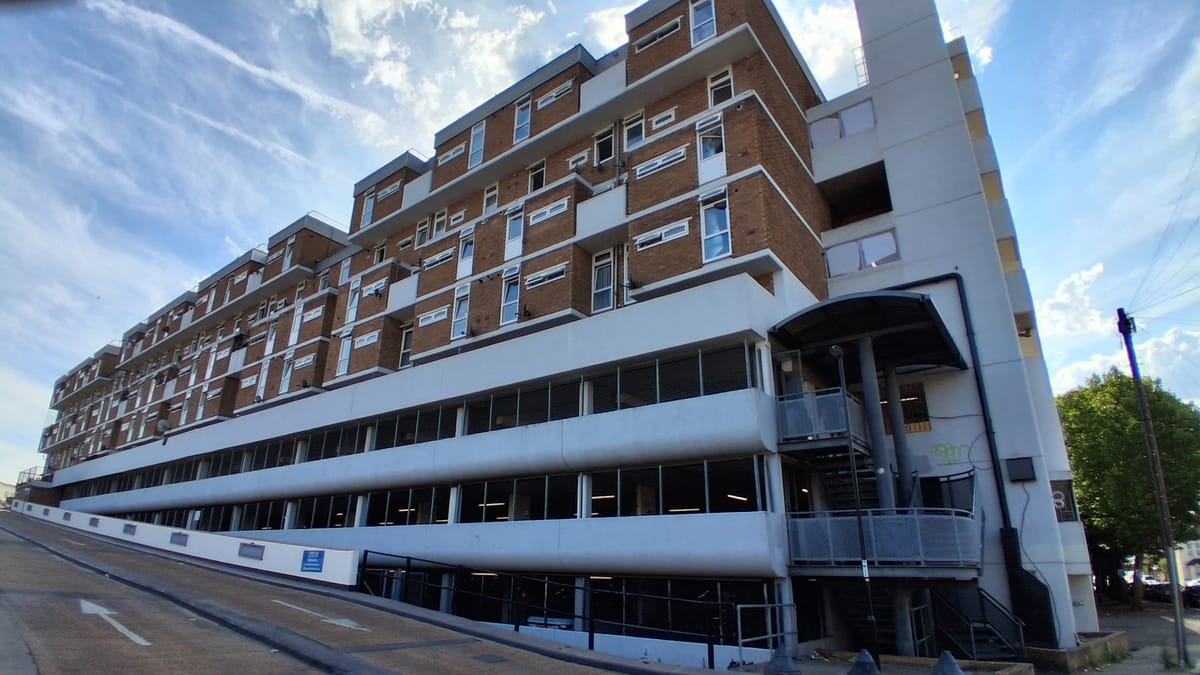
Every morning when I open my curtains, I see Milford Towers - part of the Catford Centre. I regularly walk through Milford Tower’s ground floor car park to get to the shops in Catford. (Although sadly I can no longer walk to a local cinema.)
I have delivered leaflets across the estate, I know my way around it. And during the Covid pandemic, I volunteered to do pharmacy deliveries to local people in Catford, which included regular deliveries to a very sick man living in Milford Towers.
I've lived in Catford since 1999, so Milford Towers is something I know a little about.
In responding to Martha McAlpine's interview with architectural historian Jon Wright and filmmaker Ben Honeybone about their film Another Catford, I would like to stress that I do not underestimate their important work in putting a spotlight on some fine architecture across Catford.
The film is incredibly well-researched and thought provoking. I agree that it needs to be seen by more people, and I back their call for a screening at the Broadway Theatre, followed by a roundtable discussion with key local decision makers.
However, I part company with them in their devotion to preserving Milford Towers, primarily, it seems, due to its brutalist architecture and as a legacy of the architect Owen Luder.
For a different point of view of some of the fundamental problems in the design of the Catford Centre, and especially Milford Towers, I recommend taking a look at an external report commissioned by Lewisham council in 2011, which states:
Milford Towers has limited aesthetic merits and architectural interest, however it is not a fine example of brutalism, nor innovative in terms of its design or concept. It is considered that Milford Towers does not possess the architectural quality or historic interest to meet the listing criteria.
In addition, the estate has severe failings which stem from its design and the environment it created.
It goes on to make the damning comments:
Much of the Owen Luder Partnership’s output has been subject to substantial later criticism, and their aesthetic appearance and fitness for purpose in particular have been questioned. The development considered here is a late, problematic example of such work, beyond the stage when the practice’s works were at their best being dramatic and sculptural.
The report was almost certainly commissioned by Lewisham council in the hope of finding evidence against listing Milford Towers. However, even if planning consultants CgMs were looking for answers that the council wanted to see, their observations and research should not be casually dismissed.
The report highlights that Milford Towers was never used for the purpose it was designed for. It was designed for private housing, but instead was used for social housing from the outset, “a major flaw in not fulfilling its original design brief.”
The report notes that the building was poorly constructed, and makes this observation about how residents felt about the estate from its earliest days:
An article in the South London Press from 20 February 1979 reveals that within 5 years of opening, Milford Towers was known by residents as 'Faulty Towers'. According to the article, 'Families are calling on Lewisham Council to move from the estate'.
Five years later, Building Design (no. 719, December 14 1984) was reporting that a series of constructional and design flaws had led to various operational problems; the 'Faulty Towers' moniker is repeated here again.
Amongst the constructional issues, it is noted that 'water penetration, defective roofing, spalling concrete and 'severe environmental problems' caused by defective deck accessing' had been identified.
It also noted that £1m of work had been identified as necessary by Lewisham Council for a building that had been built for £2.5m a mere decade earlier.
Finally, it is clear that Luder's exposed decks and staircases were a significant piece of failed design, and that the problems were not purely a result of poor construction.
Lewisham's assistant borough architect described these access routes as a 'wind tunnel', funnelling wind and rain into the electrical gear in the lift shafts, causing them to short.
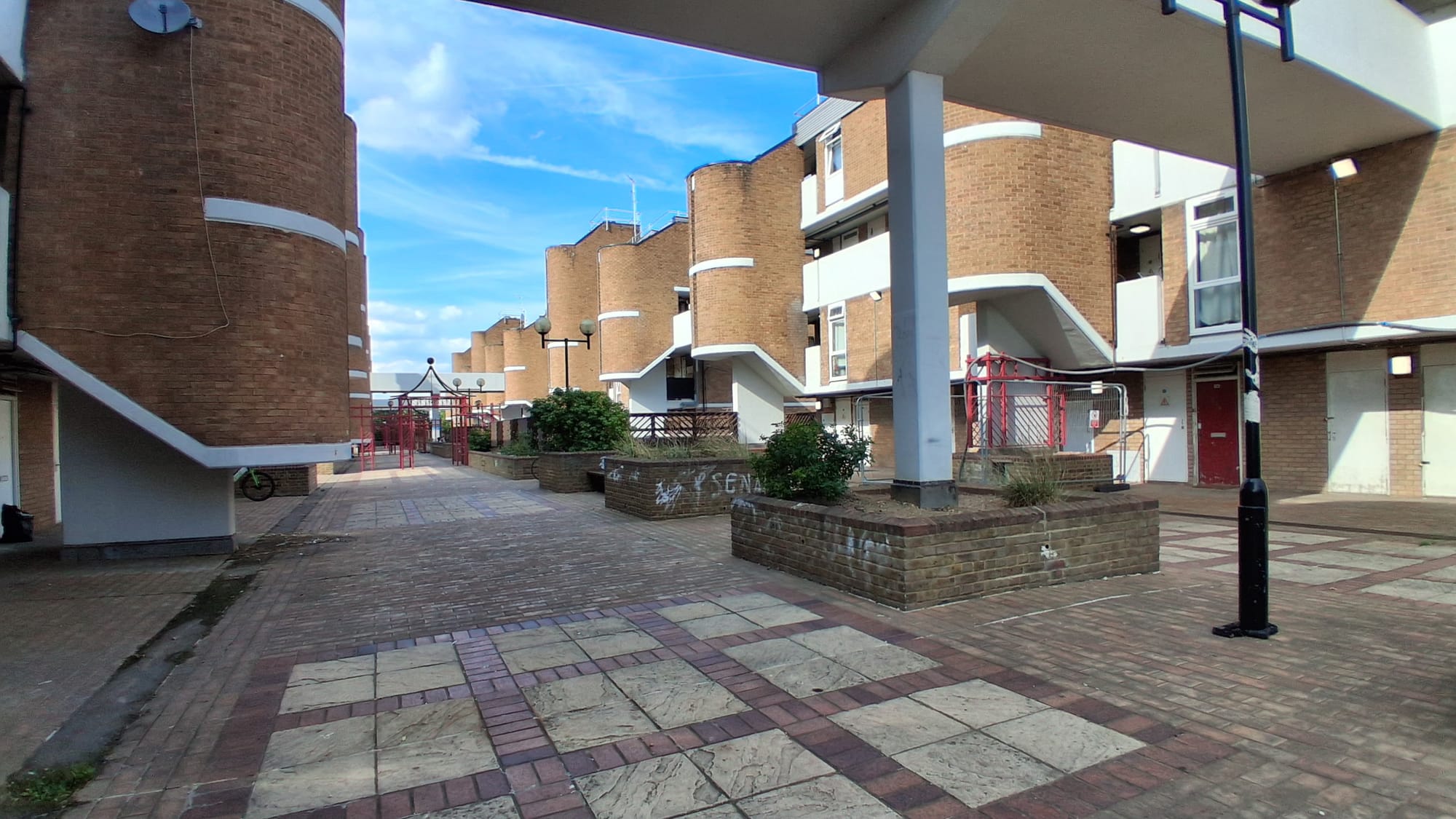

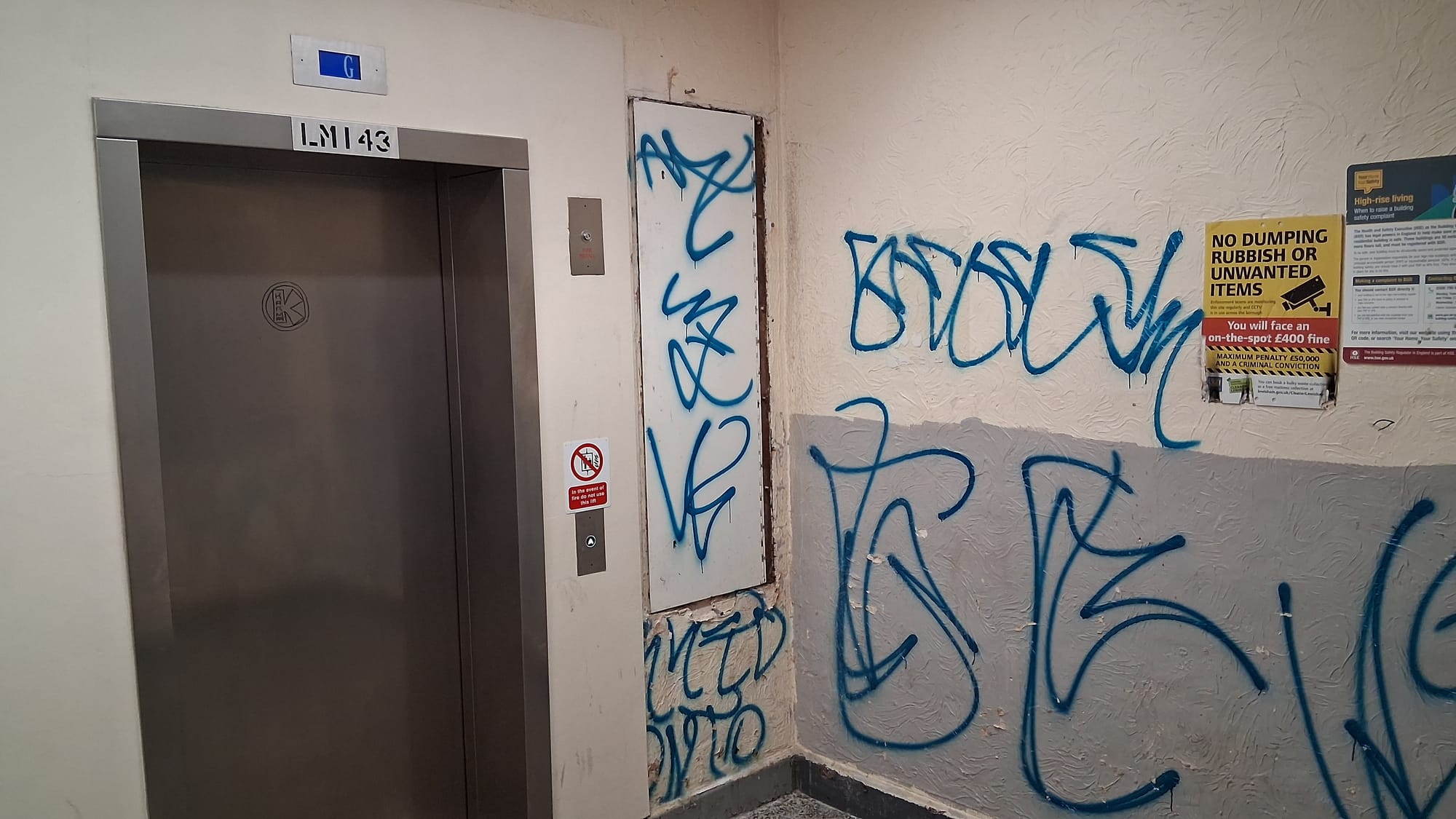
Internal courts and walkways of the estate. Images: Mark Morris
I add three further comments:
Firstly, access for disabled people and creation of a safe environment appear to have been low priorities in the design of the estate.
Although Milford Towers has lifts, the reality is that - even when the lifts are working - many residents cannot get from the ground floor to their front doors without also accessing stairs, and sometimes many stairs.
There are places where twisting stairwells serve only a single flat or two flats, creating a walk to the doorstep that may feel unsafe for vulnerable residents. While architects now talk about ‘designing out’ crime when designing estates, it seems that Milford Towers was the opposite - a housing estate with crime ‘designed in'.
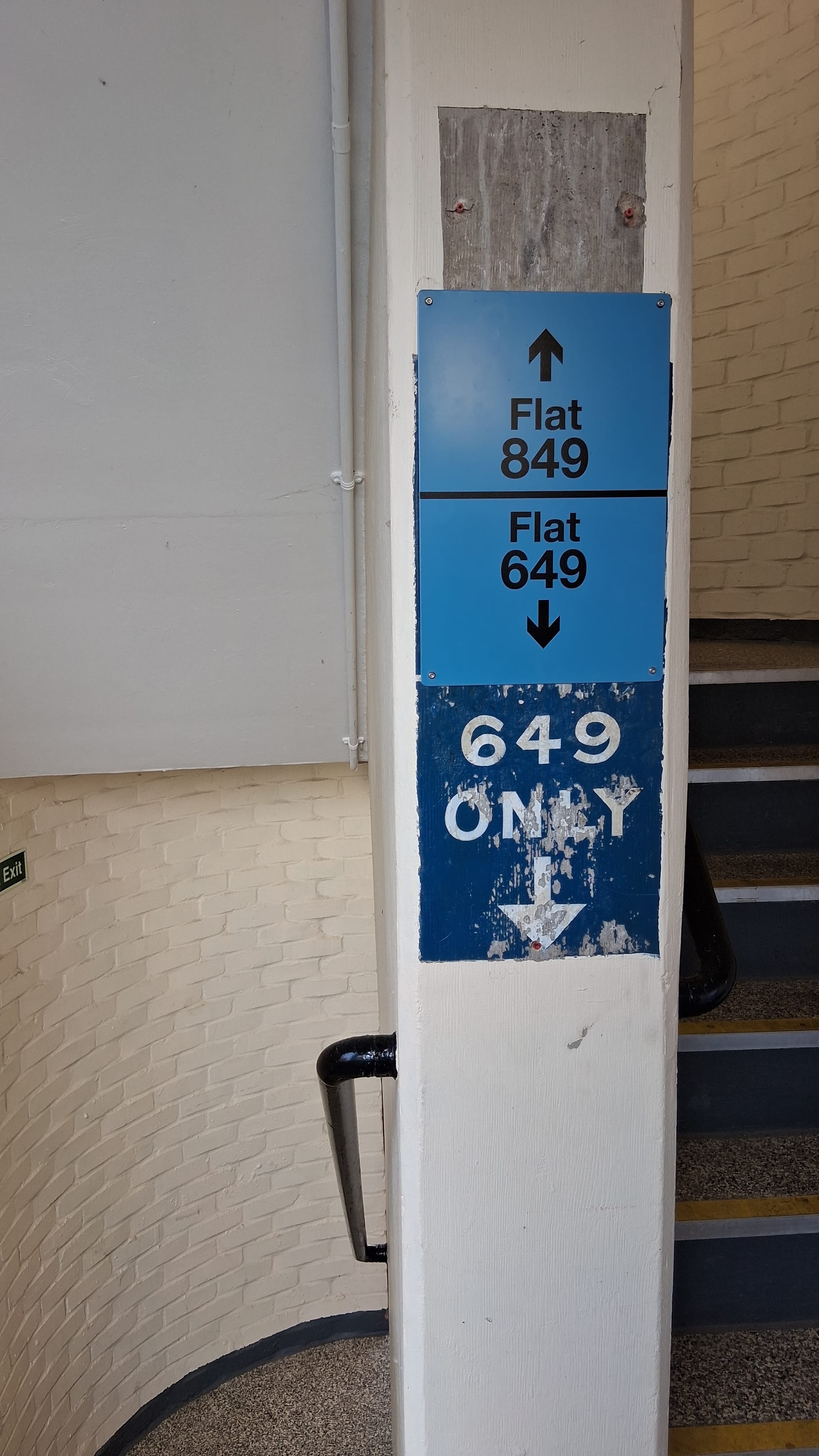
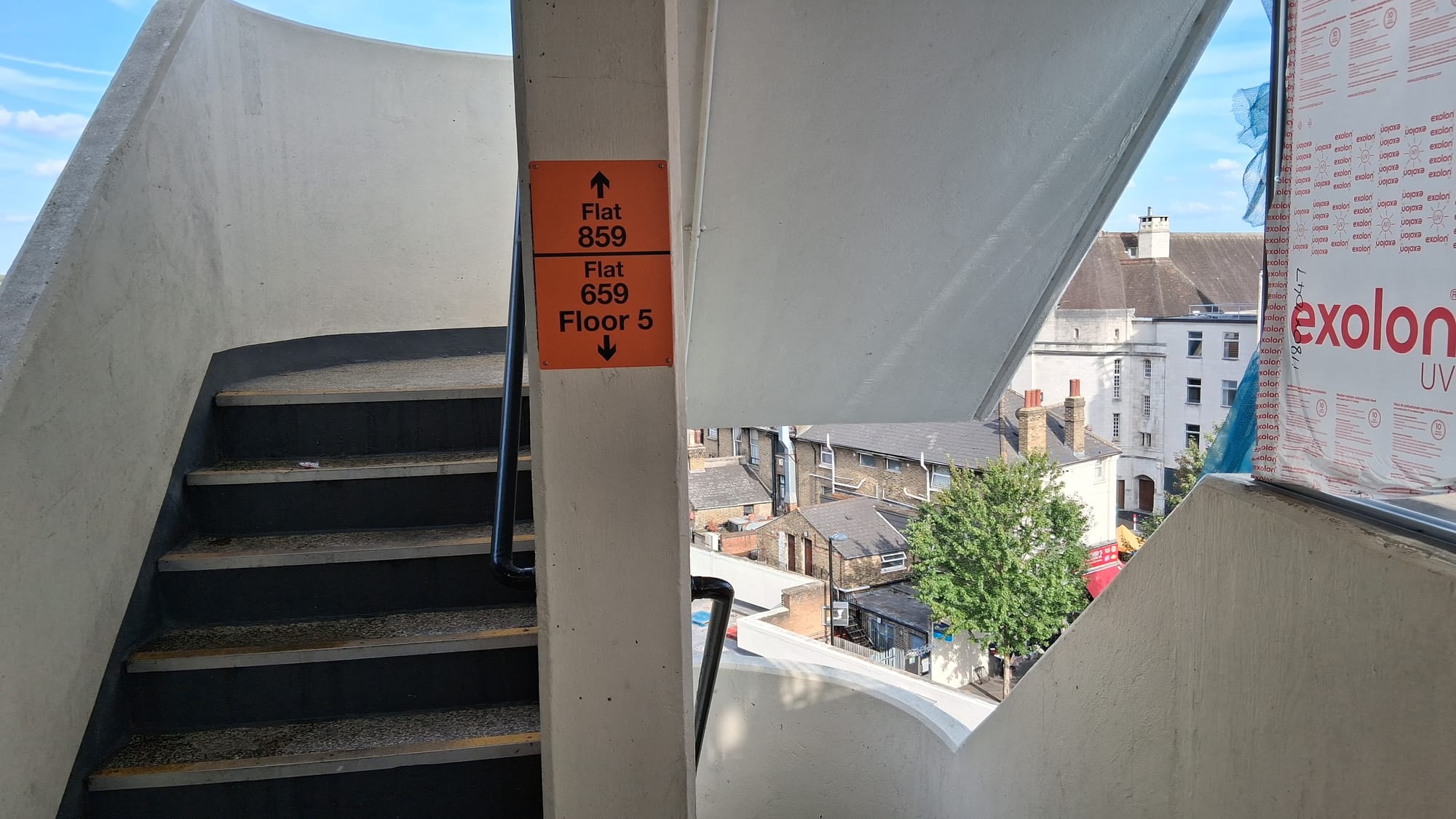
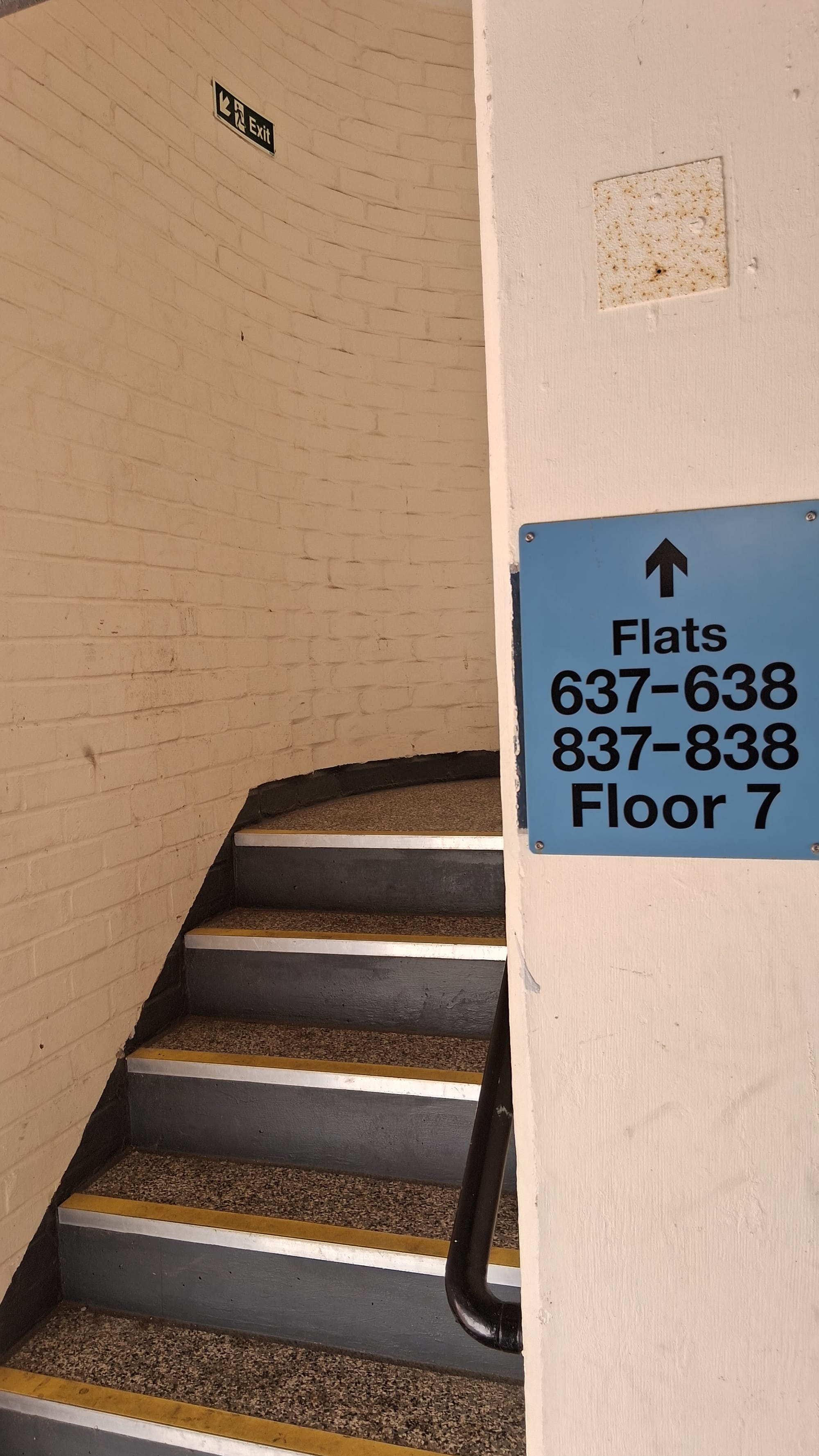
Some stairwells lead to a single flat or two flats, raising safety concerns. Images: Mark Morris
Secondly, Milford Towers makes poor use of space, due to so much of it being given over to car parking. The estate is built on top of three large floors devoted solely to car parking, which are heavily underused.
It was designed around the outdated concept that one day everyone in Catford would be totally reliant on cars – surely one of the worst aspects of urban planning of the early 1970s.
Even walking through the car park from Holbeach Road can be unpleasant for Rushey Green residents and if anything acts as a deterrent to active travel.
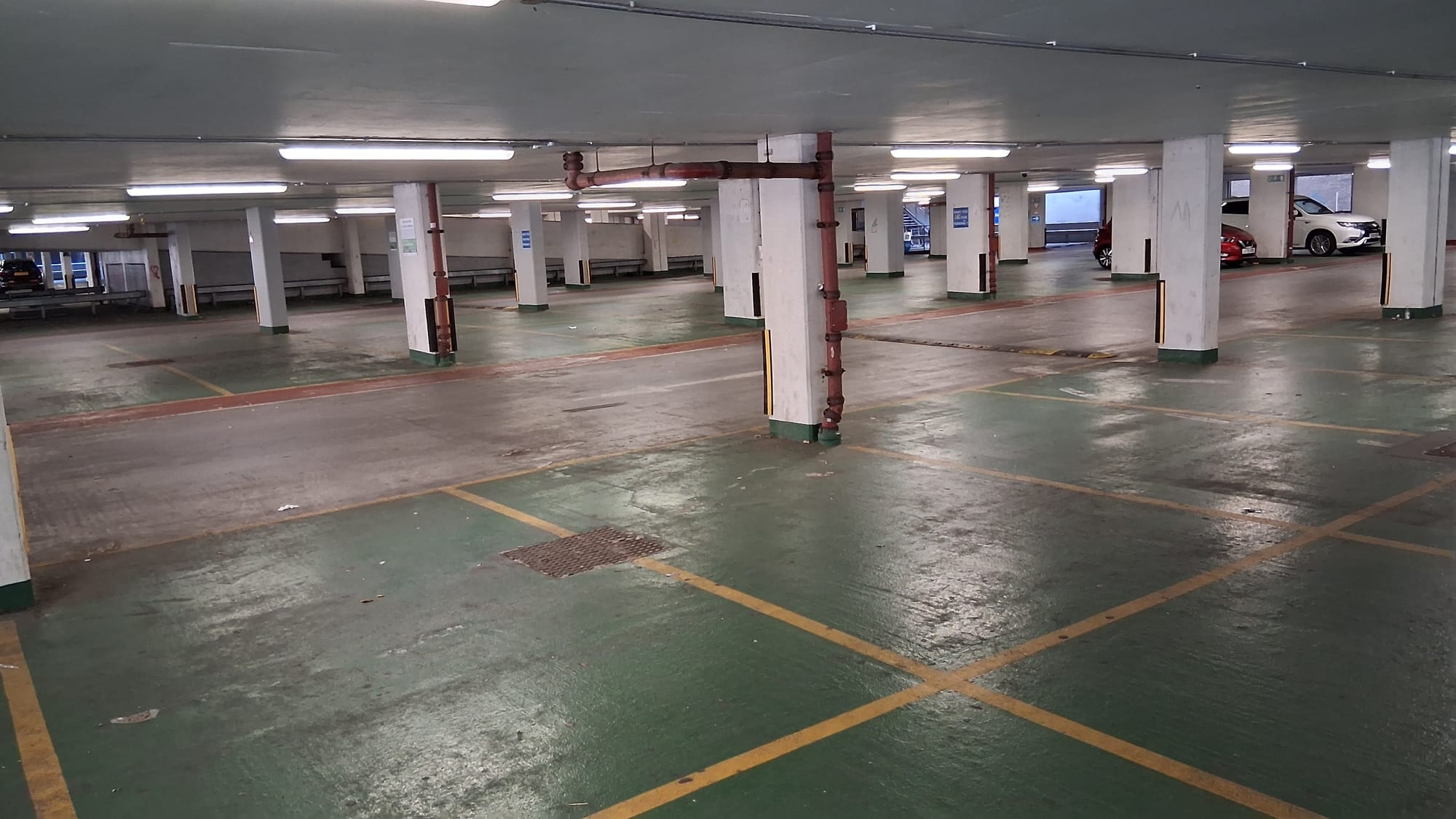
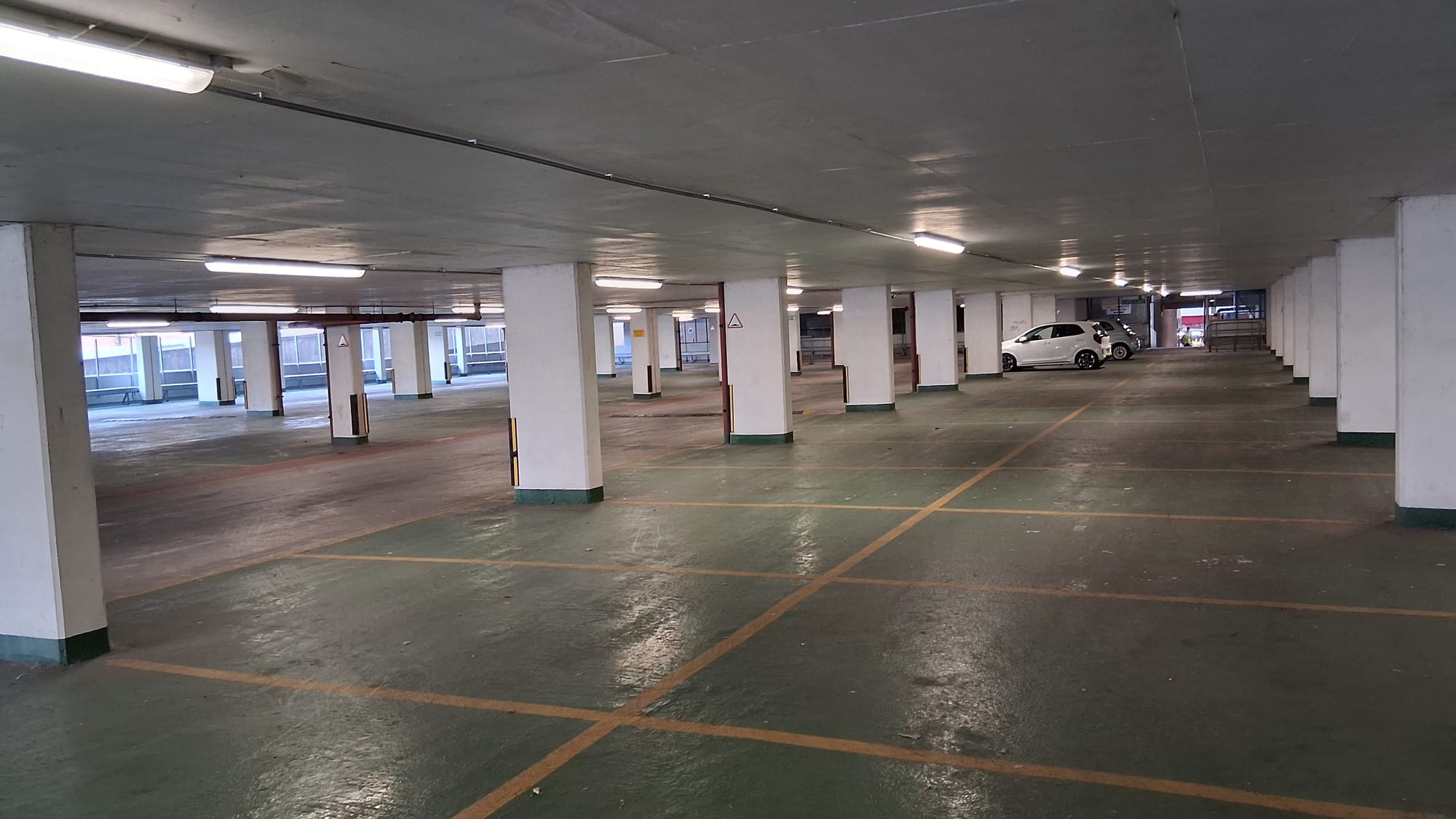
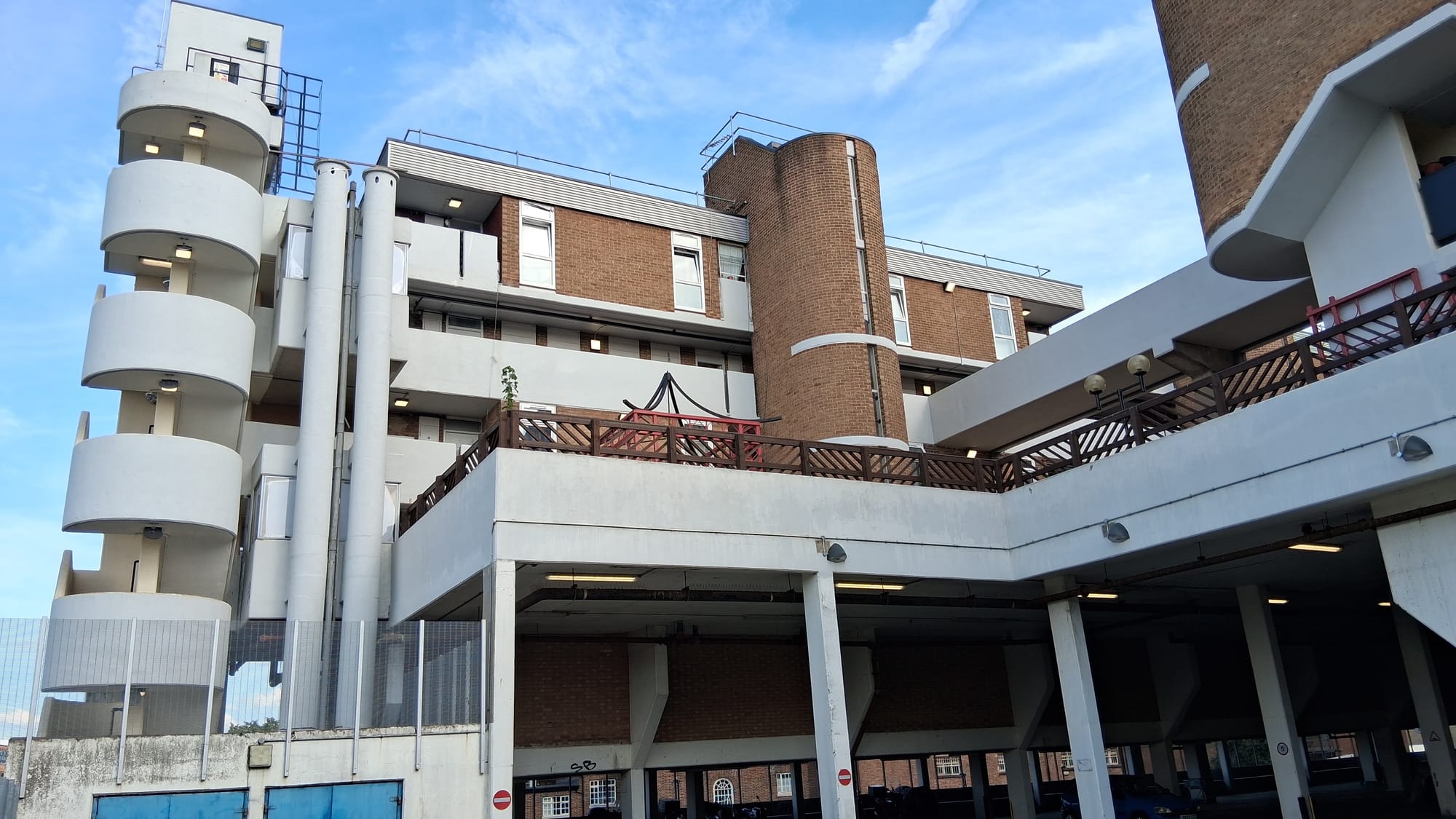
ground floor and 2nd floor of car park are deserted, 5pm on Friday 18 July. Images: Mark Morris
Thirdly, there is the myth that Milford Towers has not received investment since it was constructed. In fact, expensive repairs began within a decade of it opening.
And while questions should be raised about the recent management record of housing association Notting Hill Genesis (and indeed Lewisham Council), as highlighted in the Independent in 2024, it cannot be denied that serious investment has been allocated, including £16.21 million since 2018.
Residents' accounts challenge the claim made in the interview, that Milford Towers has generally been a pleasant place for adults or children to live. This Guardian video, giving a voice to local residents, sets out the harsh reality.
Looking at the extensive failings of Milford Towers, most of which have existed since the 1970s, I believe the onus is on those that want to preserve it for posterity, for Catford residents and as a legacy to Owen Luder, to show how this could be practically possible. And to show how this could be done while addressing the fundamental failings of its design, which have impacted so severely on so many residents over the last 50 years.
If they cannot do this, let’s start planning for a better future where there are far more social homes in this location, well-designed homes that are safe, energy efficient and fully accessible.
Mark Morris has lived in Catford since 1999. He was a Liberal Democrat councillor for Downham Ward, Lewisham from 2002 to 2009.

